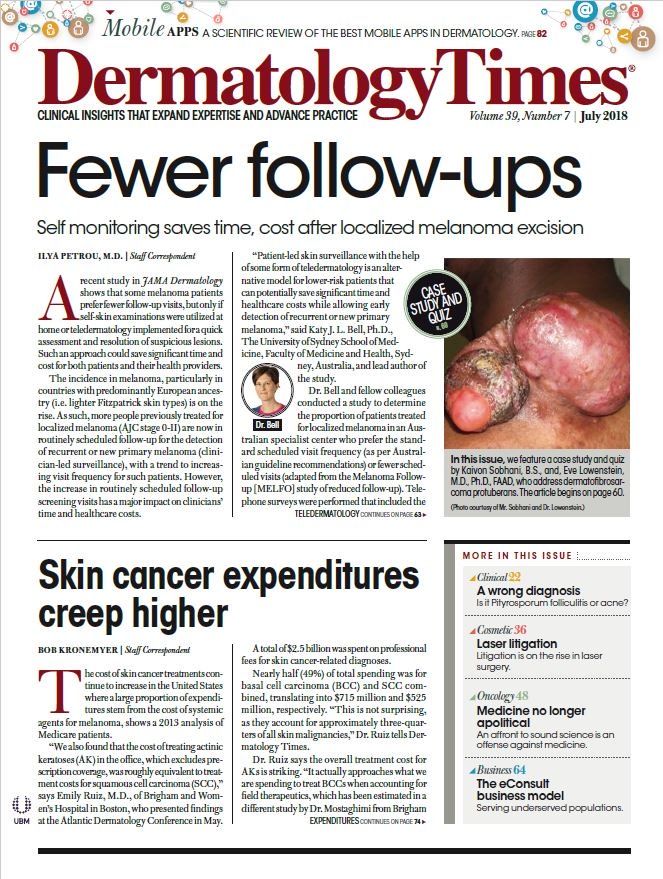- Case-Based Roundtable
- General Dermatology
- Eczema
- Chronic Hand Eczema
- Alopecia
- Aesthetics
- Vitiligo
- COVID-19
- Actinic Keratosis
- Precision Medicine and Biologics
- Rare Disease
- Wound Care
- Rosacea
- Psoriasis
- Psoriatic Arthritis
- Atopic Dermatitis
- Melasma
- NP and PA
- Skin Cancer
- Hidradenitis Suppurativa
- Drug Watch
- Pigmentary Disorders
- Acne
- Pediatric Dermatology
- Practice Management
- Prurigo Nodularis
- Buy-and-Bill
Publication
Article
Dermatology Times
Study: Novel 670 nm wavelength works for benign pigmented lesions
Author(s):
A novel picosecond/nanosecond 670 nm wavelength is safe and effective for the treatment of benign pigmented lesions.
A novel picosecond/nanosecond 670 nm wavelength is safe and effective for the treatment of benign pigmented lesions, suggests the results of pilot study presented at the American Society for Laser Medicine and Surgery annual conference this spring in Dallas.
Patients commonly seek treatment for benign pigmented lesions, but selective photothermolysis can be accompanied by side effects, including hyper- and hypo-pigmentation, so researchers decided to assess the clinical efficacy of a novel 670 nm wavelength.
While the 532 laser has relatively high absorption, absorption of the 1064 is very low level, explained Omar A. Ibrahimi, M.D., Ph.D., of the Connecticut Skin Institute in Stamford. The 670 nm was considered to be in the “Goldilocks range,” offering relatively good absorption and relatively good penetration depth.
The 10 patients in the study received up to ten treatments at six to eight week intervals using a picosecond/nanosecond laser platform consisting of a novel 670 nm wavelength. Ninety days after the last laser treatment they attended a follow up visit where digital pictures of the lesions were taken.
Three blinded dermatologists assessed the digital pictures taken at follow up with those taken at baseline, and scored improvement on a five-point scale, where zero represented no improvement, and four very significant improvement (75-100 percent clearance). Eight patients finished the study, and the average clearance of the pigmented lesions was between significant and very significant.
A novel picosecond/nanosecond 670 nm wavelength is safe and effective for the treatment of benign pigmented lesions, the researchers concluded.
“Well defined discrete lesions respond to as little of a single treatment,” Ibrahimi pointed out. “Side-effects are minimal and resolved within three months follow-up.”
REFERENCE
“Clinical Evaluation of a Novel Picosecond 670nm Wavelength for the Treatment of Benign Pigmented Lesions,” Omar A. Ibrahimi, Connecticut Skin Institute, Stamford, Conn. American Society for Laser Medicine and Surgery annual conference 2018, Friday, April 13, Dallas.







